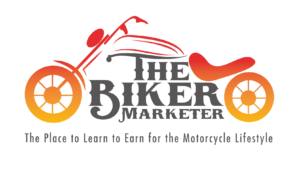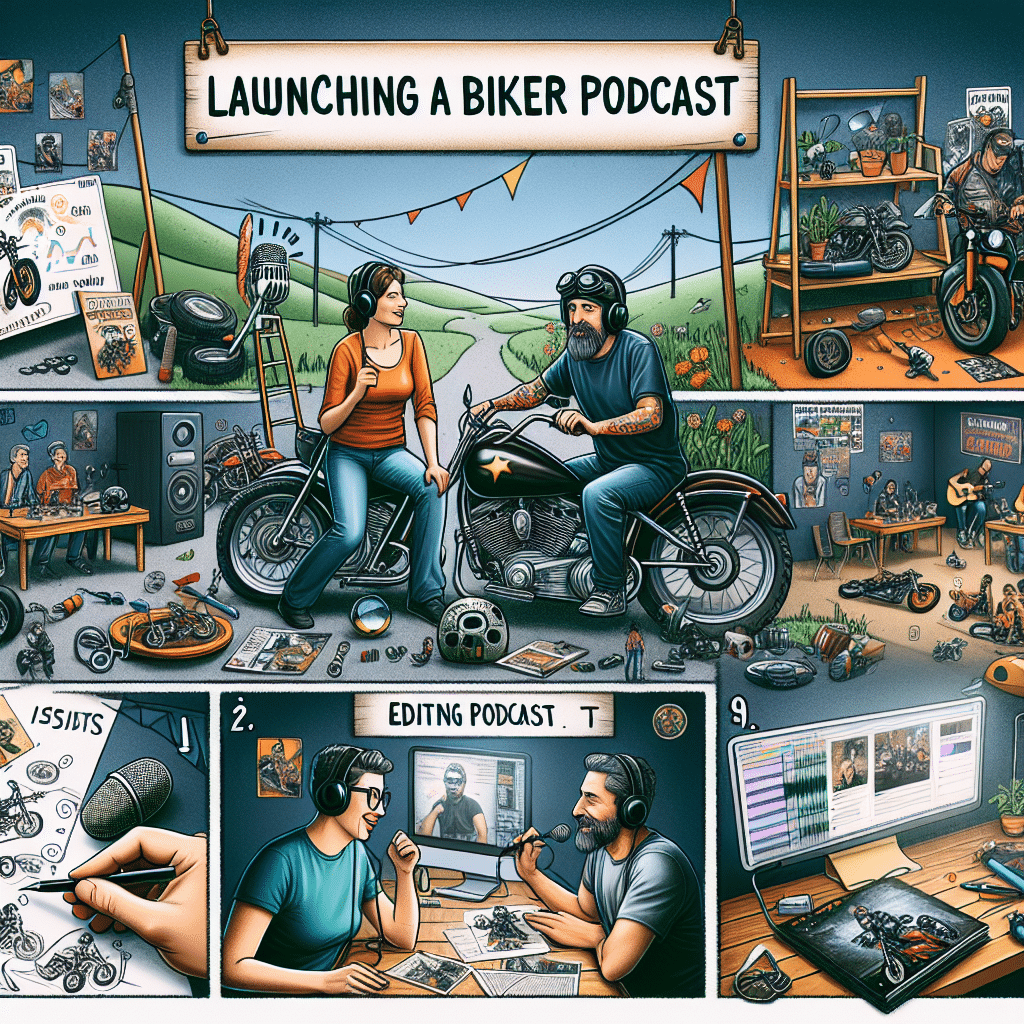Define Your Podcast’s Purpose
Understanding Your Audience
Before diving into the technical stuff, it’s crucial to figure out who you’re talking to. As a biker, I’ve realized that our community is diverse; some of us are weekend riders while others live and breathe motorcycles. Knowing who you’re speaking to will shape your entire podcast. So, take a moment to envision that ideal listener. What do they love? What drives them to ride?
Once you nail down your audience, create a persona around them. It helps if you visualize someone—a fellow biker, perhaps—and think about what they would be interested in hearing. Are they after adventure stories, technical tips, or maybe even bike reviews? Getting clear on this will help you tailor content that resonates.
A defined audience is your compass; it directs your content and keeps you on track, ensuring every episode hits the mark. Trust me, an authentic connection with your listeners is what will keep them coming back for more.
Setting Your Podcast Goals
Every great journey starts with a destination, right? The same goes for your podcast. Ask yourself what you genuinely want to achieve. Is it to build a community, showcase your bike adventures, or maybe even generate some income? Setting clear goals will keep you focused and give your podcast a sense of purpose.
Once your goals are set, break them down into actionable steps. If your goal is community building, perhaps you’ll engage with listeners via social media or host live Q&A sessions. Flexibility is key; don’t be afraid to adapt your goals as you learn more about your audience.
Lastly, celebrate the small wins. Each episode recorded, each new listener gained—these are milestones that should energize you and remind you why you started this journey in the first place.
Choosing a Niche
The biker podcast world has a ton of options—riding tips, gear reviews, road stories—you name it! But, honing in on a niche can be a real game-changer. My podcast, for example, strictly focuses on long-distance riding, which makes it easier for me to create content that’s both informative and captivating.
Picking a niche doesn’t mean you’re limited; think of it as a framework within which you operate. You can still explore a range of topics as long as they align with your core focus. This helps attract a dedicated audience that knows what to expect from your show.
Plus, who doesn’t love a little specialty? Being recognized as an expert in a particular area can boost your credibility and attract listeners who are specifically interested in what you have to say.
Plan Your Content
Creating a Content Calendar
Once you know your purpose and audience, it’s time to map out your content. I can’t stress enough how helpful a content calendar is. It doesn’t have to be fancy; just a simple table outlining what topics you’ll cover and when you plan to release episodes can do wonders.
This helps me stay organized and ensures that I’m not scrambling for topics at the last minute. Plus, having a calendar allows for themes, guest interviews, and special episodes that can keep your audience engaged.
Be sure to leave some wiggle room for spontaneous content! The biker world is full of events, rallies, and surprises. Sometimes the best podcast episodes come from current events or personal experiences, so keep your calendar flexible!
Developing Episode Formats
Now, let’s talk about how to structure each episode. Are you going for solo rants, interviews with fellow bikers, or maybe a storytelling format? My personal favorites are a mix—throwing in some solo content with guest interviews can keep things fresh and engaging. The key is to explore and find what resonates with both you and your audience.
Consider having a consistent introduction, a theme for the episode, and a call to action at the end. It not only gives your show cohesion, but it also makes it easier for your listeners to follow along. Plus, it builds familiarity—in podcasting, familiarity breeds comfort!
Don’t overthink it. Your structure can evolve over time, so allow yourself that flexibility. What matters is that you’re being authentic and providing value to your audience.
Gathering Resources
Now that we’ve got topics in mind, let’s gather the resources you’ll need. Equipment-wise, a decent microphone and some basic editing software can go a long way. I remember my first recording with an old USB mic—it was far from perfect, but it got the job done! You don’t need a complete studio setup to start; many podcasts thrive on simple gear.

As you grow, you can invest in better quality equipment. But remember—the most important thing is your content. If your stories resonate with listeners, they’ll overlook a few audio hiccups here and there.
Also, keep a list of potential guests and content ideas to reference when you’re brainstorming future episodes. Always have a ‘rainy day’ list to pull from when inspiration hits a slump!
Launch Your Podcast
Selecting a Hosting Platform
The big moment is here: it’s time to launch your podcast! The first step is choosing a hosting platform. There are plenty of options out there like Libsyn, Podbean, and Anchor. Each has its own perks, so choose one that meets your needs and budget.
Make sure to check what features they offer. Things like analytics, episode distribution, and even monetization options can be crucial as your podcast grows. Take the time to read reviews or watch tutorials to get a sense of which platform feels the most intuitive to you.
Remember, your hosting platform is the backbone of your podcast. Choose wisely, and ensure that it aligns with your current goals and future aspirations.
Creating Buzz Before Launch
Before launching, create some buzz! Start by teasing your podcast on social media—post snippets, behind-the-scenes, or even countdowns to your launch. Let your friends in the biker community know what you’re doing; they can become your first supporters and give you valuable feedback.
Engaging with potential listeners before you officially launch builds anticipation. Maybe consider setting up a mailing list so that anyone interested can get updates or exclusive content. These early supporters are crucial in helping your podcast take off.
Word of mouth within the biking community is powerful. So be sure to tap into those connections you already have and encourage them to spread the news!
Publishing Your First Episode
Finally, the day has come to publish your first episode! This is your moment, and I can assure you it’ll feel rewarding. When you upload that first episode, make sure to double-check everything—metadata, descriptions, and accompanying artwork. You want it to look professional and inviting.
After publishing, don’t just sit back; you need to promote it! Share on social media, join forums where bikers hang out, and engage with your listeners. Ask for reviews and feedback—it not only helps you improve but also builds community.
Lastly, remind yourself that this is just the beginning. Each episode provides you with experience and growth opportunities. Embrace the journey and keep riding those podcast waves!
FAQs
1. How Long Should Each Podcast Episode Be?
There isn’t a one-size-fits-all answer for this. But generally, 20-60 minutes works well for most podcasts. Find a length that allows you to completely express your ideas while keeping your audience’s attention.
2. Do I Need a Professional Studio to Record My Podcast?
Nope! Many successful podcasts are recorded in home studios with basic equipment. A quiet space and decent microphone are often all you need to get started.
3. How Do I Attract More Listeners?
Engagement is key! Use social media to connect with your audience, consider being a guest on other podcasts, or collaborate with fellow podcasters to reach a broader audience.
4. What if I Make Mistakes During Recording?
Don’t sweat it! Editing is your friend, and a few hiccups can even make your podcast feel more relatable. Just focus on being authentic and having fun with it!
5. Can I Monetize My Podcast? If So, How?
Absolutely! Once you’ve built a loyal audience, you can explore options like sponsorships, merchandise, or even crowd-funding through platforms like Patreon. But focus on growth first—monetization can come later!


